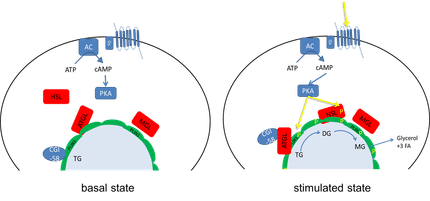How bacteria sense the world
Advertisement
Researchers at the RIKEN SPring-8 Center have addressed how environmental stimuli are converted into biological signals using the highest resolution analysis of its kind to date. Their findings reveal that interaction between a particular kinase sensor and catalytic domains act as an on/off “switch” that triggers phosphorylation in response to environmental stimuli. While advancing our understanding of environmental response in bacteria, the current findings could also accelerate the development of products such as antibacterial agents and plant growth regulators.
Transduction of signals from the environment is an essential process enabling cells to respond to external stimuli. In many organisms this happens via a process known as the two component system (TCS); a stimulus-response mechanism centred on the interaction of a sensor protein – in this case histidine kinase (HD) – and a response regulator (RR).
In a paper to be published in Structure, the team present an X-ray crystal structure analysis to study this interaction within the bacterium Thermotoga maritima - of interest because of its ability to metabolise carbohydrates such as cellulose and xylan that can be converted to hydrogen.
Analyzing the HK/RR interaction site in detail, they show an interdomain β-sheet between the sensor domain and catalytic domain of histidine kinase (HK), providing crucial clues about the enzyme’s folding structure. They also determined that two molecules of histidine kinase form a dimer, which bonds to two response regulator molecules. Overall, the findings reveal that interaction between HK sensor and catalytic domains act as an on/off “switch” in the TCS, triggering phosphorylation in response to environmental stimuli.
Most read news
Organizations
Other news from the department science

Get the life science industry in your inbox
By submitting this form you agree that LUMITOS AG will send you the newsletter(s) selected above by email. Your data will not be passed on to third parties. Your data will be stored and processed in accordance with our data protection regulations. LUMITOS may contact you by email for the purpose of advertising or market and opinion surveys. You can revoke your consent at any time without giving reasons to LUMITOS AG, Ernst-Augustin-Str. 2, 12489 Berlin, Germany or by e-mail at revoke@lumitos.com with effect for the future. In addition, each email contains a link to unsubscribe from the corresponding newsletter.


























































